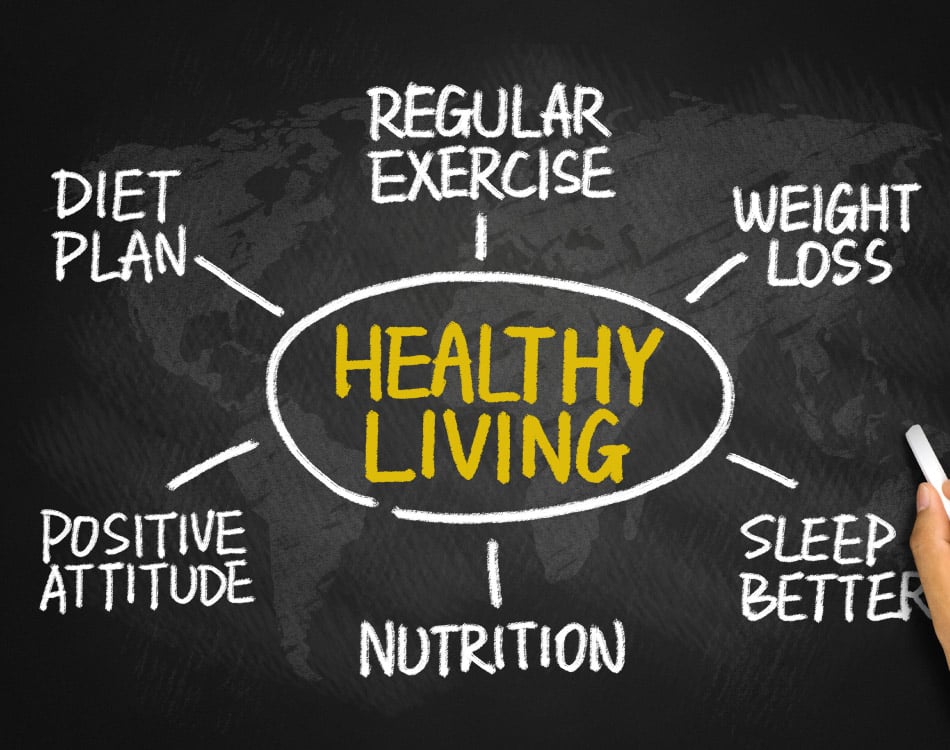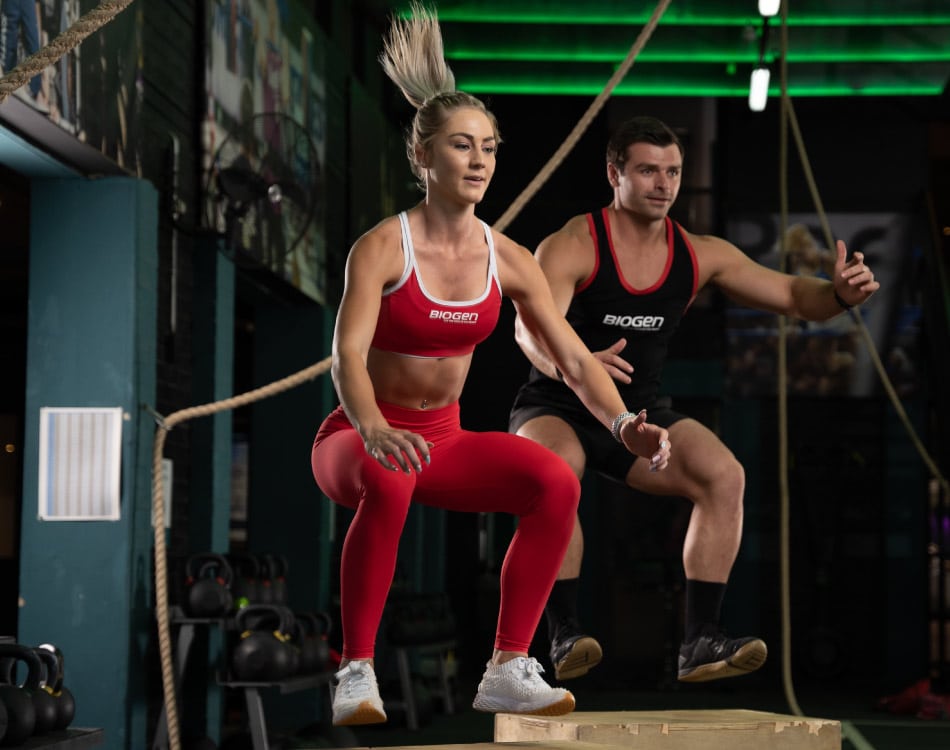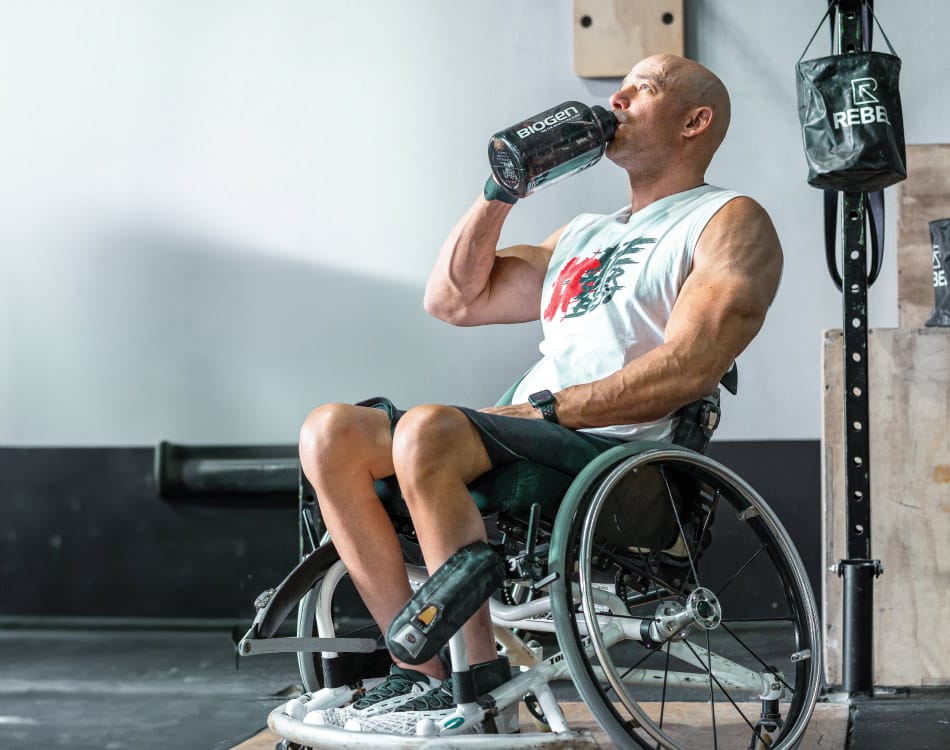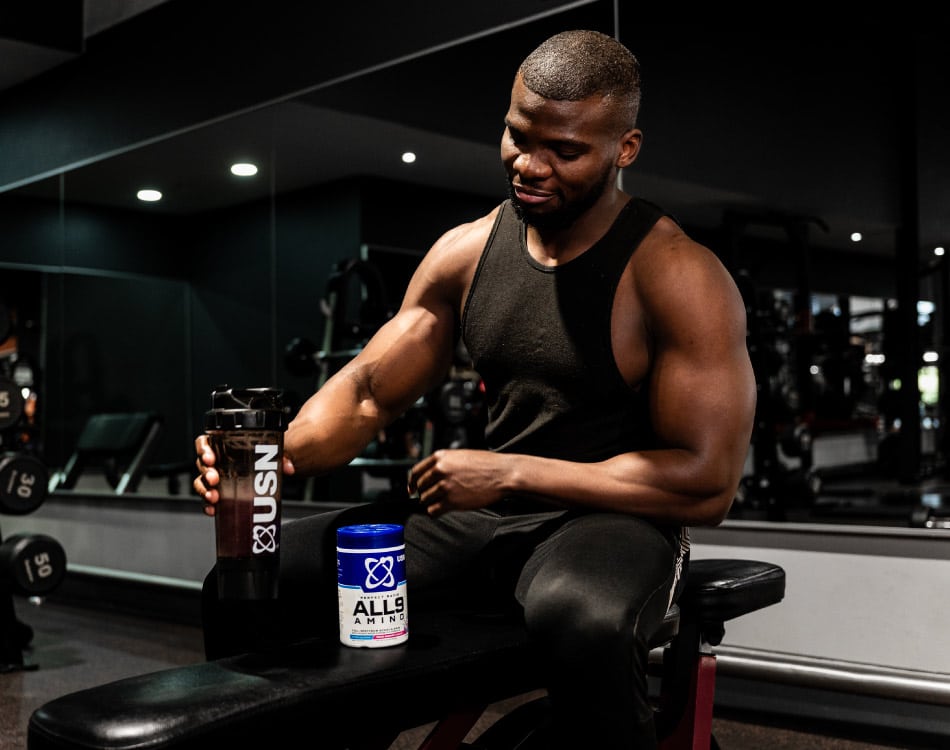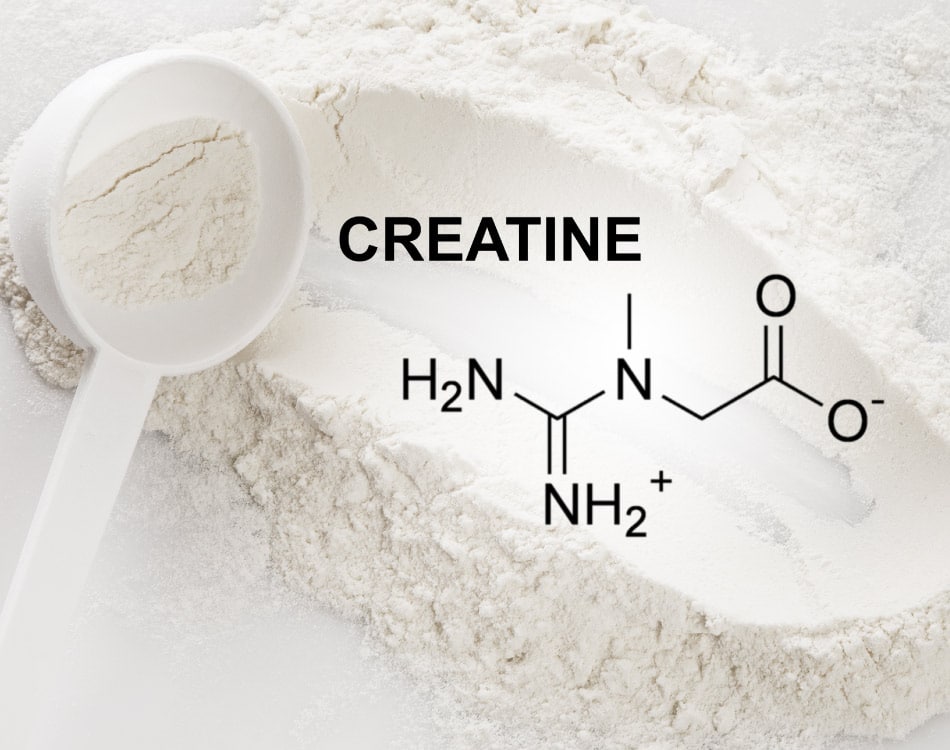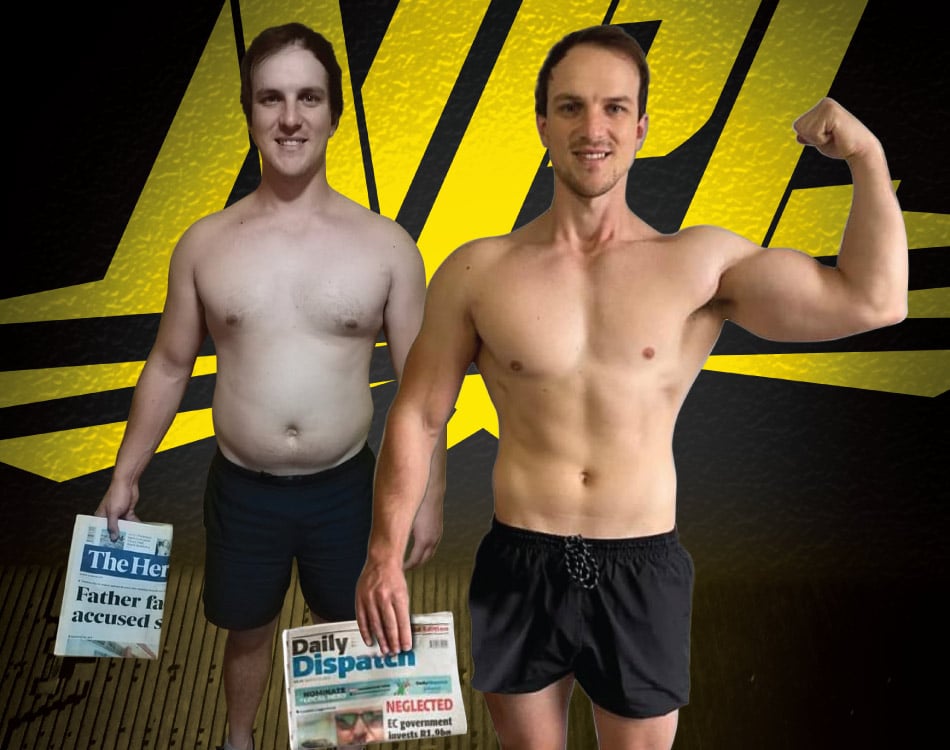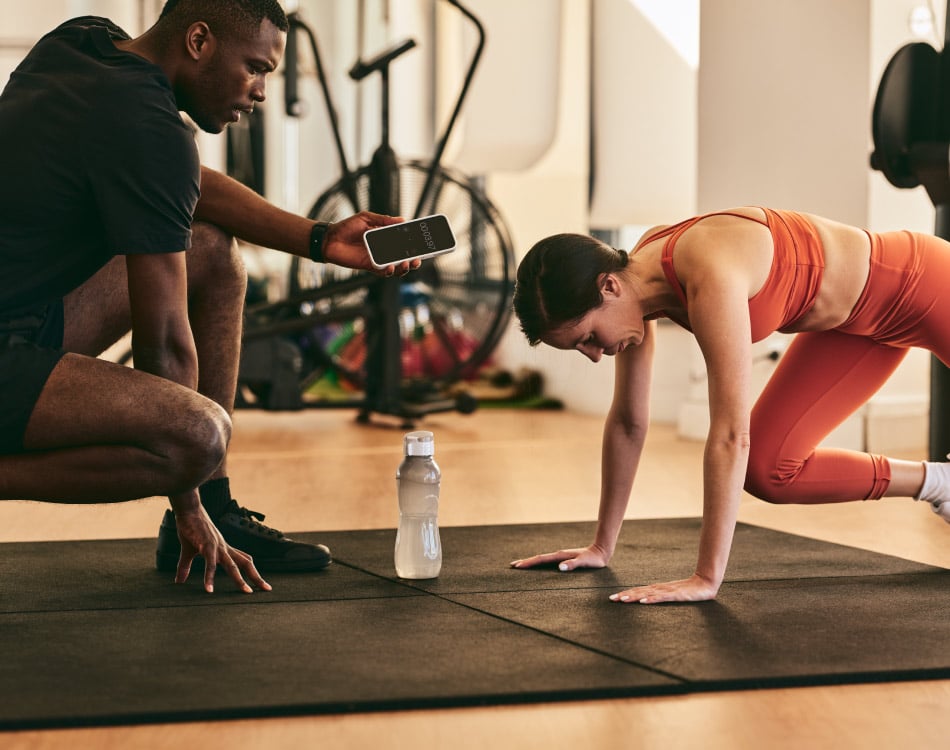You’ll often hear personal trainers and transformation coaches say that you need to change your lifestyle to achieve your weight-loss goals and get a better body, and they’re not wrong.
However, that’s a broad statement with many facets to it. To help you break this goal into smaller, more achievable steps, here are 15 tips for a better body.
READ MORE | 15 Muscle-Building Tips That Work
-
Get assessed
Don’t just focus on your weight. Start your journey with a body composition assessment that measures key indicators like your waist, hip and other circumference measurements, as well as your body fat percentage.
This data will provide a holistic view of your body’s current condition and will enable you to more accurately track your progress toward your goal at subsequent assessments.
-
Monitor your progress
Simply keeping track of your measurements isn’t the only indicator that you’re on the path to success. A daily check-in with your heart rate monitor can reveal beneficial trends.
For example, a drop in your resting heart rate may indicate a rise in fitness levels, while a reading above normal may suggest your body is battling a cold or flu infection.
A monthly strength or fitness test will also let you know that your training is working and affirm that your progress is still on track.
-
Get your diet on point
A diet that consists predominantly of natural and minimally processed foods is the cornerstone of every effective nutrition plan. Focus on eating nutrient-dense foods that have few additives and added sugar, if any.
This eating approach boosts the nutritional value of the food you eat, while potentially lowering the calorie content of each meal.
Additional dietary techniques, such as macronutrient timing or manipulation in the form of carb cycling, carb backloading or low-carb eating may also help to deliver better results.
The ideal approach is to consult with a qualified dietitian for an individualised eating plan that aligns with your goals, your lifestyle, your current health and your genetics.
-
Eat enough protein
Increase your protein intake to build more lean muscle. This is especially important after training sessions.
Drinking a protein supplement like a whey blend or plant-based product after your workout is a quick, convenient and effective approach to aid recovery and improve muscle gain.
The ideal way to meet the remainder of your daily protein requirements is by including a portion of protein in every meal. This could include eggs, dairy, chicken, fish or meat, or plant-based proteins from a variety of sources such as nuts, seeds and beans.
-
Fight your fat phobia
Dietary fat isn’t as bad for your body as once thought. In fact, certain fats are vital for optimal healthy. For instance, our bodies require some saturated fat to produce important hormones and repair cells.
Fat can also help you lose weight. Replacing processed carbs and sugar with natural, healthy fats as part of a low-carb, high-fat diet can help to improve insulin sensitivity, which aids weight and fat loss.
-
Drink sufficient water
Chasing those weight-loss targets means you’re going to sweat up a storm during training. It is important to replace what exercise takes out by drinking sufficient water – up to 3 litres a day for the average active individual.
However, if you exercise outdoors, especially in a warm, humid environment, or at high intensities for prolonged periods, you may require extra fluid – up to 300ml per hour.
Water is also an essential constituent in a number of biological processes and even mild dehydration can affect your performance, concentration levels, and can make you feel lethargic during the day. Swapping sugar-laden soft drinks or fruit juices for plain water will also reduce your overall calorie and sugar intakes.
-
Have a plan
Arriving at the gym with a plan will ensure that you don’t waste time and that you work towards a predetermined goal. Aimlessly performing exercises that serve no real purpose won’t deliver the results you’re after, which can lead to a loss of motivation.
Planning your exercise program properly also means periodising your workouts so that you don’t plateau. This will ensure that you continue to make progress, while reducing your injury risk. You will also find that your workouts are constantly challenging and interesting.
Consult with a qualified personal trainer, or mix and match programmes to create the ideal training approach based on your body transformation goals.
-
Up your intensity
Most of us only have 30-60 minutes a day to dedicate to training, so we need to make the most of it! The best way to train when time is a limited resource is with high-intensity interval training (HIIT).
Incorporating metcons, Tabatas or circuits into your weight training sessions will help you burn more calories to start seeing results sooner. This type of training helps to boost your metabolism, even after you’ve left the gym, and the added resistance helps to sculpt shapely, attractive muscle.
Similarly, applying the HIIT principle to your cardio will yield better body conditioning results.
Working through a wide heart rate range during a 45-minute spinning session, for instance, will burn more fat and more calories than 45 minutes on the stationary bicycle because it uses more energy, increases your post-exercise metabolic rate to prolong the ‘after-burn’ effect, and places greater demands on your cardiovascular system.
-
Focus on full-body workouts
The conventional approach to weight training isolates muscle groups at each session. While this is the most effective way to build serious muscle, a total-body exercise routine that incorporates multiple compound movements delivers a challenging workout that generally expends more energy.
And burning more calories per session is the ultimate aim when you’re trying to lose weight and tone up.
Focus on movements like squats, deadlifts, presses, lunges and combination exercises like burpees. They engage more muscles per rep and are more functional. Once you reach your goal weight, you can then shift to a programme more focused on body sculpting, if that is your goal.
-
Train hard, recover smart
While your time spent training is important, you also need to give your body time to recover if you want to see results.
Exercise is a form of stress and causes damage to muscle and connective tissues. It is only when you rest and feed damaged muscle cells with proper nutrition that your body starts to respond and adapt.
As such, it is important that you give yourself at least one day of rest a week. But that doesn’t mean you need to remain idle.
Active rest in the form of some outdoor activity like walking or hiking, or some mobility work or yoga will help your body recover, while burning extra calories in the process.
-
Hold yourself accountable
Holding yourself accountable to your weight-loss goal with a commitment device is a powerful way to ensure success.
An effective approach is to tell someone about your goal and agree to some form of fine or repercussion should you fail to achieve your target. These incentives make an otherwise empty promise more meaningful, while ensuring we remain committed and see the process through to the end.
Hiring a personal trainer is another option as it creates a financial incentive to attend every paid-for session, while getting a training partner creates a social compact that you won’t want to break for fear of letting down your friend.
-
Celebrate the small victories
Staying on track to achieve your bigger goal is easier when you set yourself a series of smaller targets, with a reward system in place to reinforce and celebrate your achievements once you reach them.
Rewards like buying new training gear or clothes, or a day at the spa when you reach an intermediate weight target are all great incentives that might help you stay focused. Avoid food-based rewards.
-
Make sustainable lifestyle changes
Most people fail at their weight-loss or body transformation attempts because the diet and exercise program they follow are too extreme and, therefore, unsustainable.
The key to success is making healthy eating and exercise a part of your daily life.
It’s a slower process but you’ll find it much easier to maintain your new weight or physique if your approach is already entrenched in your lifestyle.
-
Educate yourself
Your biggest asset in your battle against the bulge is knowledge. If you understand how your body works and how food, supplements and exercise impact your weight, then you are already on your way to a better body.
Read books, magazines and relevant websites, talk to personal trainers and fitness instructors at the gym, and join social networks that align with your interests to start brushing up your knowledge about the human body, its physiology, and inner workings of effective exercise modalities.
-
Don’t be a copy cat
No two people are alike as we all have different genetic profiles, body shapes and lifestyles, and we all respond differently to foods and environmental factors.
This means that you won’t respond in the same way to a specific exercise and diet as someone who has successfully lost weight or transformed their physique.
As such, it is important to try different things to find what works for you. You can also speak to the fitness professionals at your local gym or online coaches to help take the guesswork out of finding the right diet and exercise program to suit you and your specific goals.

